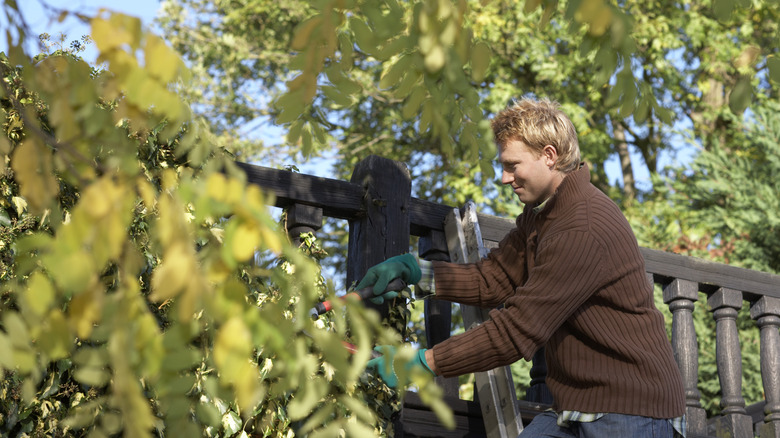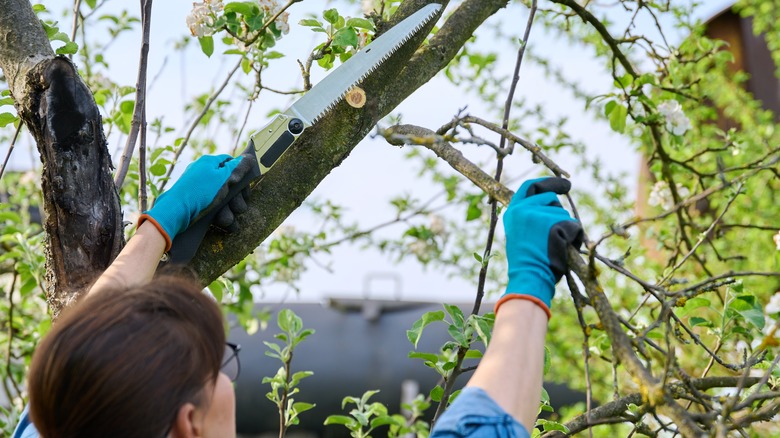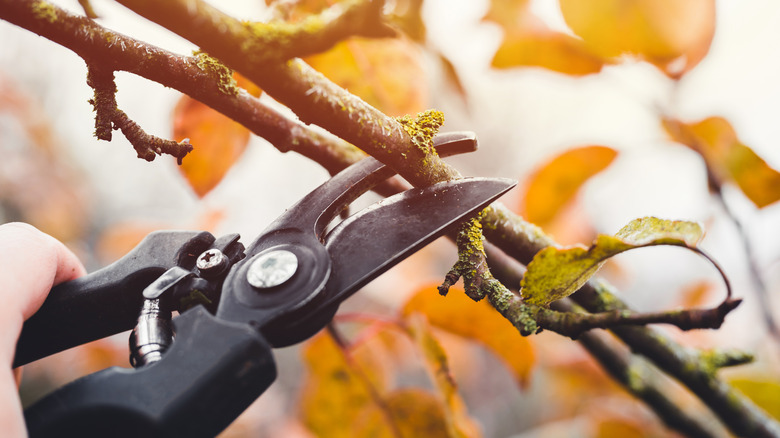How To Prune Your Trees The Right Way Without Calling A Pro
Pruning is the process of removing dead or dying parts of a tree or plant so that it can grow again stronger. In addition to keeping the tree healthy, pruning is a way to regulate the size of a tree and stimulate its flower and fruit growth. Pruning also fulfills an aesthetic purpose because your trees will look better without any dead or broken limbs, and the process can also be a way to shape the tree into the form you want.
While you might usually call a professional to prune the trees in your garden, it is actually something you can do yourself. As long as your tree isn't too big or with a complicated form, you just need to have the right tools and know the proper steps. Ready to take on those overgrown trees in your garden? Here is how you can prune them without calling a pro.
Different ways to prune
There are various ways to prune a tree based on the parts you want to remove and the problems you're trying to address. Dead pruning takes care of the weak or dead branches and is what most homeowners typically think about when it comes to pruning. Pollarding is for young trees and involves cutting off all the branches regularly to control the tree's size. Crown reduction is focused on the top part and controls the height of the tree, while crown thinning targets the weaker limbs at the top. Crown lifting is the pruning of limbs and branches that hang lower.
There are also three main types of pruning cuts and the one you use will depend on the size and location of the branch in comparison to the other branches it's connected to. Thinning cuts take off side branches growing out of larger branches, reduction cuts take off branches larger than the one they sprouted from, and heading cuts take off a branch's tip to allow the side buds to grow.
How to prune like a pro
Before you start pruning, it is important to have the right tools and identify which branches you're removing. In addition to dead and diseased branches, you should also cut branches that grow in the wrong direction or obstruct others because it's not healthy for them to chafe. Shoots that grow out of the roots, the base of the tree, or other branches, should also be removed.
The tools you will need are a set of pruning shears, a lopper, and a folding saw for larger branches. Small branches can easily be snipped off with the pruning shears. for large limbs, first, remove the weight of the branch by cutting it off about 18 inches from the trunk. Then, at the place where the branch meets the trunk, cut at a 45-degree angle from the top so the callus can grow properly and cover the open wound. When pruning fruit trees, aim to remove about 25% of the growth. Cut the branches with the least amount of buds at their base, and any that are over 1 inch in diameter should be cut where they meet the trunk.


